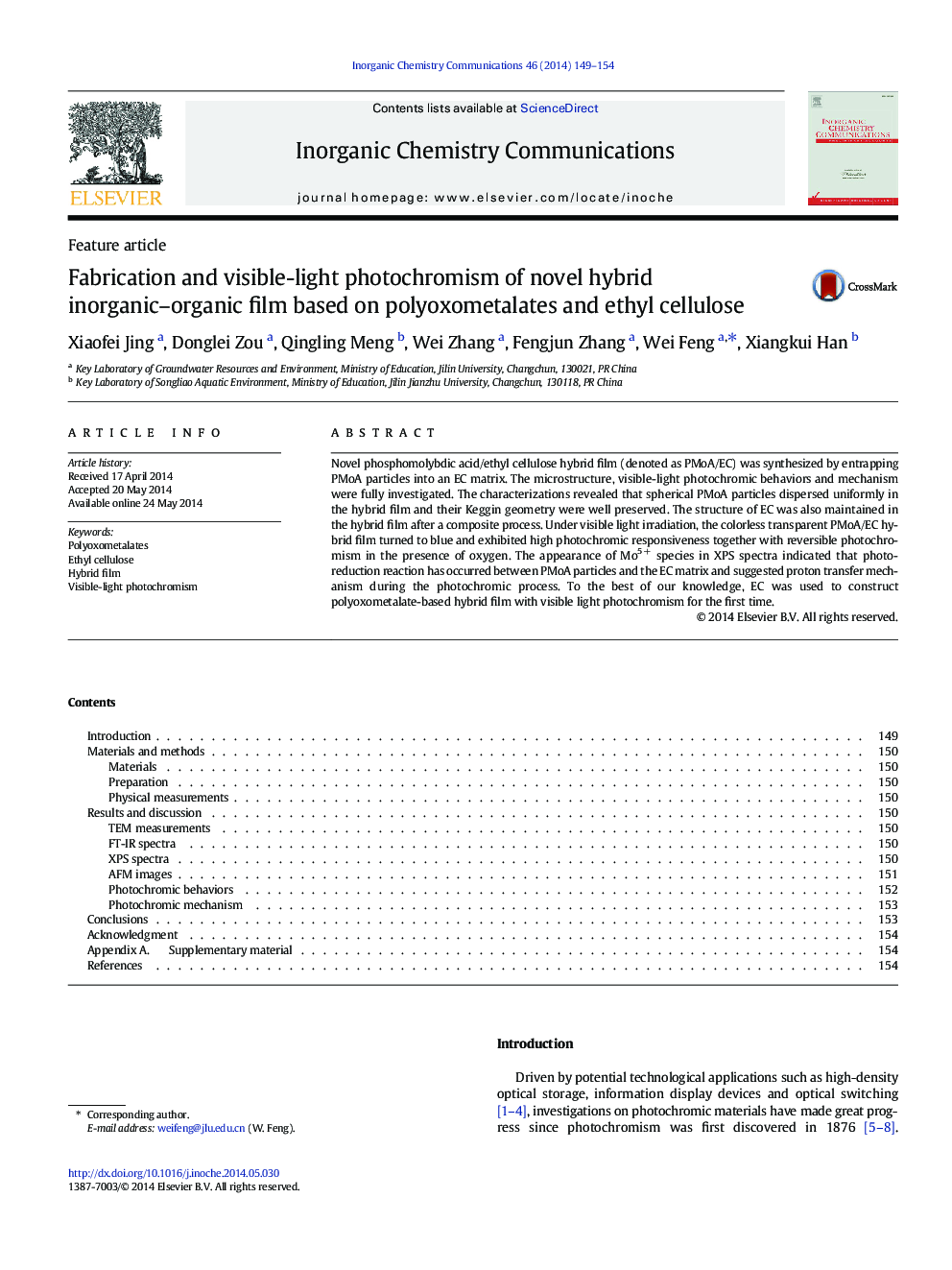| کد مقاله | کد نشریه | سال انتشار | مقاله انگلیسی | نسخه تمام متن |
|---|---|---|---|---|
| 1303548 | 1498944 | 2014 | 6 صفحه PDF | دانلود رایگان |
• Ethyl cellulose was used as matrix to construct polyoxometalate-based hybrid film.
• Reversible visible-light photochromism with high responsiveness was presented.
• Proton transfer mechanism was identified during the photochromic process.
Novel phosphomolybdic acid/ethyl cellulose hybrid film (denoted as PMoA/EC) was synthesized by entrapping PMoA particles into an EC matrix. The microstructure, visible-light photochromic behaviors and mechanism were fully investigated. The characterizations revealed that spherical PMoA particles dispersed uniformly in the hybrid film and their Keggin geometry were well preserved. The structure of EC was also maintained in the hybrid film after a composite process. Under visible light irradiation, the colorless transparent PMoA/EC hybrid film turned to blue and exhibited high photochromic responsiveness together with reversible photochromism in the presence of oxygen. The appearance of Mo5 + species in XPS spectra indicated that photo-reduction reaction has occurred between PMoA particles and the EC matrix and suggested proton transfer mechanism during the photochromic process. To the best of our knowledge, EC was used to construct polyoxometalate-based hybrid film with visible light photochromism for the first time.
Novel phosphomolybdic acid/ethyl cellulose hybrid film (denoted as PMoA/EC) was successfully synthesized by entrapping PMoA particles into an EC matrix. Remarkably, the resulted hybrid film exhibited high visible light photochromic responsiveness together with reversible photochromism in the presence of oxygen. Meanwhile, the proton transfer mechanism was identified due to the appearance of Mo5 + species during the photochromic process.Figure optionsDownload as PowerPoint slide
Journal: Inorganic Chemistry Communications - Volume 46, August 2014, Pages 149–154
